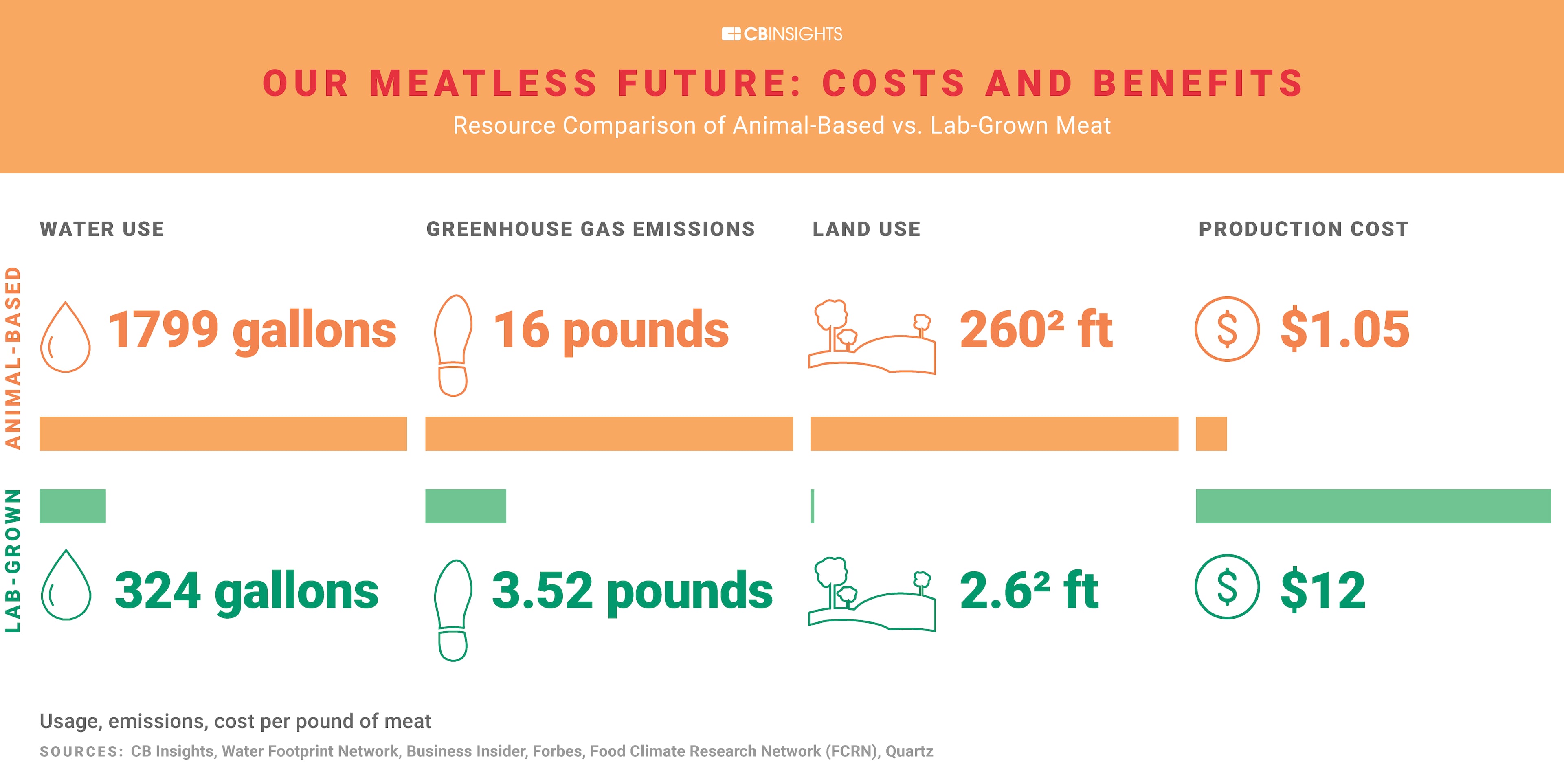How a new approach to meat can help end hunger

Lab-grown food, insect protein and sophisticated plant-based burgers are all part of the new meat mix. Image: Reuters/David Parry
Today, one in nine people are hungry. And there will be nearly 20% more mouths to feed in 2030 than there are today. But there is a reason to be optimistic: new and more sustainable types of protein are emerging. To achieve the UN Sustainable Development Goal of #ZeroHunger by 2030, this rapidly changing meat mix needs sustained support from the food industry, governments and consumers.
In fact, many consumers are actively driving this change. They are taking a back-to-basics approach to feeding themselves and their families, eschewing mass-produced, highly processed and unsustainable products. In their place come meals that are healthier and more environmentally sustainable.
This shift comes after decades of industrialization and commoditization of the global meat industry. Concerns about the negative impacts of meat production and consumption have risen in tandem. One-third of global grain production – enough to feed 4 billion people – is fed to livestock. This alone is enough to raise eyebrows. But livestock also contribute about 15% of all carbon dioxide emissions. And producing one kilogram of beef can require between 5,000 and 20,000 litres of water.

Food companies are beginning to see the business case for greater sustainability. Some of the most innovative, potentially game-changing investments are those focused on disrupting the global protein status quo. Although it is still early days, a new meat mix appears to be emerging. There are three new “meats” in this blend that can help the world achieve #ZeroHunger.
The first is cultured meat, or cell-based meat, which is grown from animal cells in a lab to produce muscle, fat and connective tissue. It is basically meat without the livestock. Proponents claim they are providing consumers with the best of both worlds—the meat they love without the resource intensity or need to slaughter animals. Some of the industry’s biggest players are throwing their weight behind it. Tyson Foods has partnered with the Israeli company Future Meat Technologies and Memphis Meats. In Europe, Mosa Meat boasts several household name investors, including Google’s Sergey Brin, the venture capital arm of Merck, and Bell Food Group.
New plant-based burgers – the second significant area of “meat” innovation – appear to be a hit among consumers. These are not your typical veggie burgers. They are carefully engineered to taste and even “bleed” like meat. The producer Beyond Meat cannot make enough to get them on UK shelves. And when the burger chain White Castle tested Impossible Burger’s plant-based burgers in three major US cities, the response was so positive that the company now plans to carry them in all 377 of its locations. It’s not just plant-based “beef” that is proliferating. The company Omnipork is looking to expand plant-based pork substitutes in Hong Kong and other Asian markets.
Finally, other companies are looking to redirect consumers toward a new source of protein altogether: insects. Traditionally consumed in Africa and Asia, insects are a good source of protein and can be farmed very efficiently. Squeamish Western consumers may hesitate to eat fried cricket, though. So companies are experimenting with insect proteins and flours, insect-laden chips and others products to reduce the “ick factor”. Companies are also looking to insects as a new source animal feed and pet food. This alone would have a major impact, as pets account for 25% of all meat consumed in the United States.
Governments have a role to play as well. The design of regulations to categorize and govern these new types of “meat” will determine how quickly the market for them will be able to grow. For example, there is a debate in the United States right now over the term “meat”, with the cattle industry looking to restrict its use to those “born, raised and harvested in the traditional manner”. And the EU does not allow companies selling vegan alternatives to milk and butter in Europe to label their products as such. But other governments appear less hesitant. Beijing, for instance, signed a trade agreement with Israel in 2017 to import $300 million in cultured meat as a part of its efforts to improve environmental sustainability.
The new meat mix presents a unique opportunity to feed the world’s growing population while also improving the environmental sustainability of the planet’s protein. Companies and consumers are already starting to embrace it. Governments now need to take action to provide a stable and transparent regulatory framework for these products. Time is of the essence. It is unlikely that the world will be able to achieve #ZeroHunger by 2030 without the new meat mix being a bigger part of the solution.
Don't miss any update on this topic
Create a free account and access your personalized content collection with our latest publications and analyses.
License and Republishing
World Economic Forum articles may be republished in accordance with the Creative Commons Attribution-NonCommercial-NoDerivatives 4.0 International Public License, and in accordance with our Terms of Use.
The views expressed in this article are those of the author alone and not the World Economic Forum.
Stay up to date:
Food Security
Related topics:
The Agenda Weekly
A weekly update of the most important issues driving the global agenda
You can unsubscribe at any time using the link in our emails. For more details, review our privacy policy.
More on Food and WaterSee all
Megha Bhargava and Digvijay Sujlana
October 10, 2024








